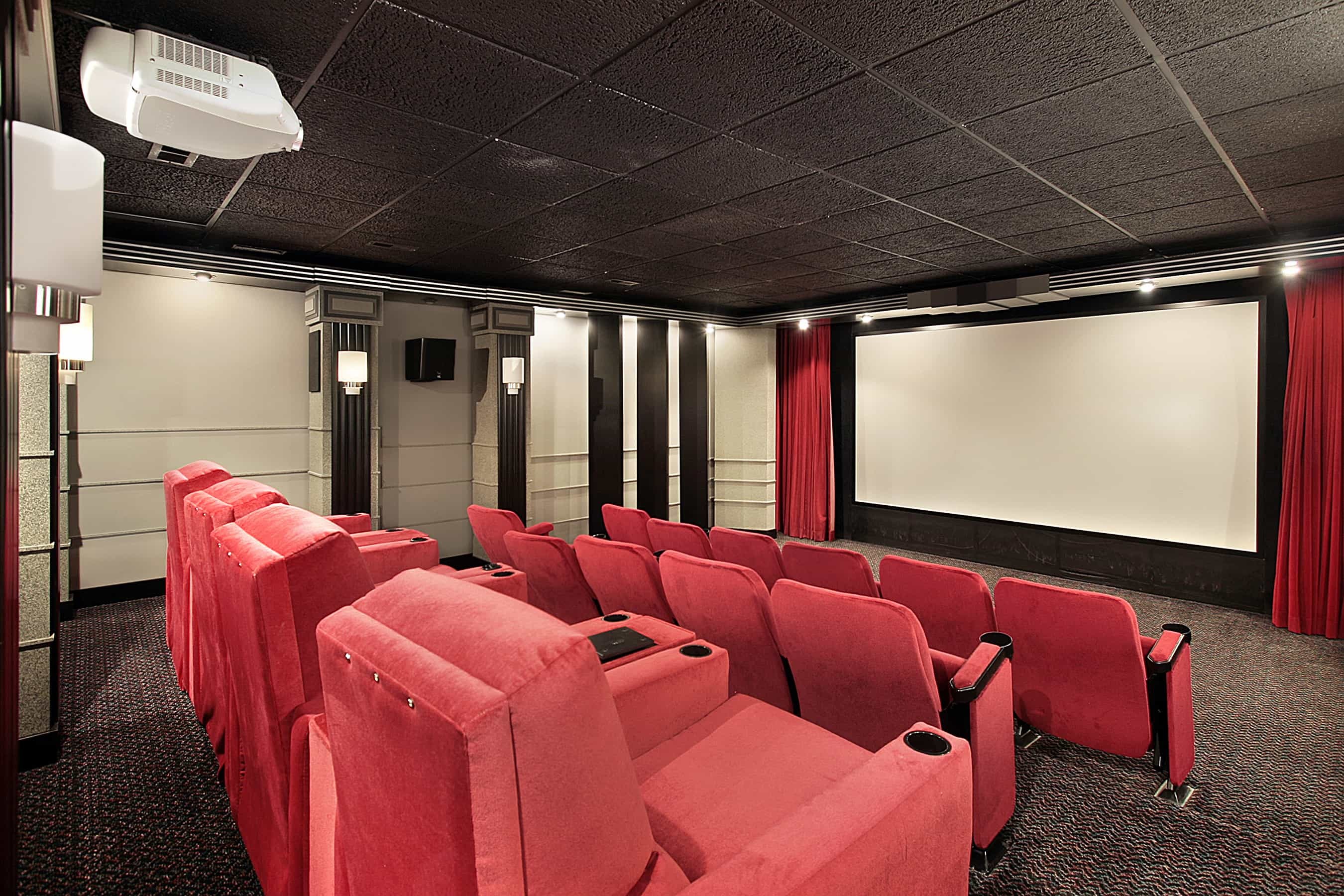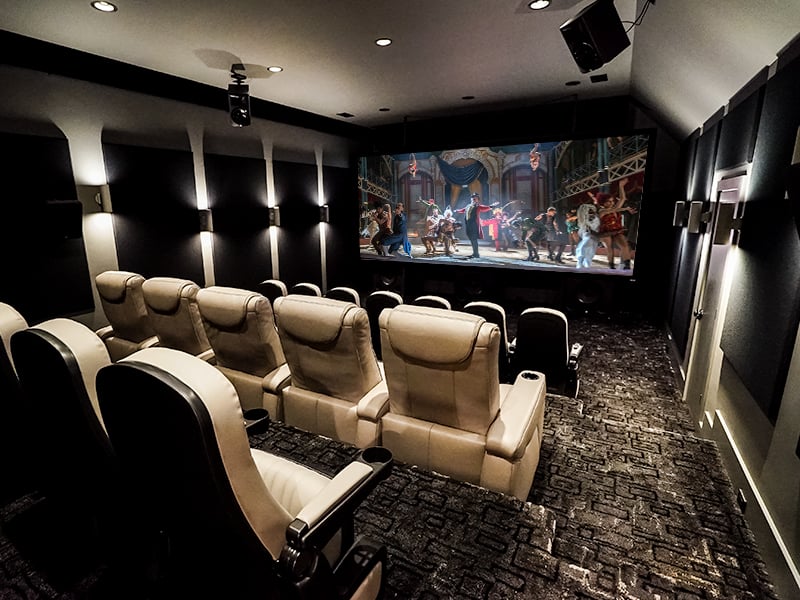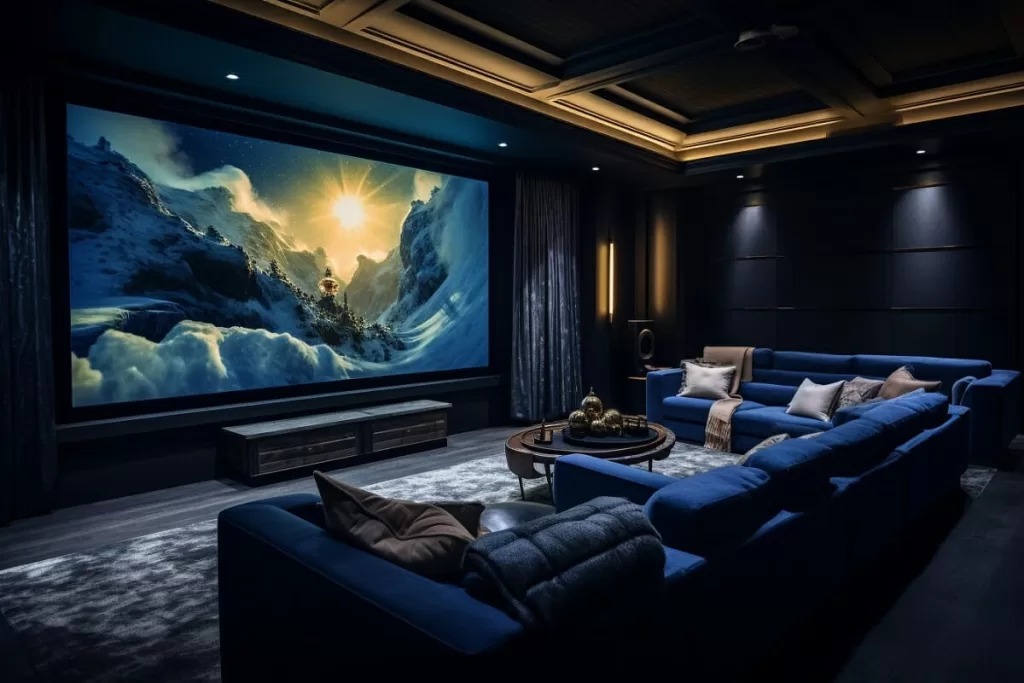Key Reasons to Choose Home Theater Tampa for Your Upcoming Project
Key Reasons to Choose Home Theater Tampa for Your Upcoming Project
Blog Article
Home Theater 101: Everything You Required to Know for a Cinematic Experience in the house
Developing a home movie theater that matches the cinematic experience of a commercial theatre involves careful consideration of multiple components, consisting of display choice, sound systems, and area design. Whether you are considering the suitable display dimension or the details of border audio, recognizing these principles is essential.
Choosing the Right Screen
When establishing a home movie theater, selecting the right display can make or damage the seeing experience - home theater installation tampa. The screen functions as the focal point of your configuration, influencing image top quality, checking out angles, and general aesthetic. Trick aspects to think about consist of display size, resolution, and kind
First, figure out the proper screen dimension based on your area dimensions and seating distance. A general guideline is to sit about 1.5 to 2.5 times the diagonal display size for optimum watching. Next, pick in between numerous screen types, such as fixed-frame, mechanized, or retractable displays, each offering unique advantages. Fixed-frame displays normally give the ideal picture top quality, while motorized choices permit versatility precede use.
Resolution is another crucial aspect. For a really immersive experience, take into consideration a screen made for 4K and even 8K content, guaranteeing sharpness and clearness. Furthermore, consider the display's gain, which influences illumination and contrast; a greater gain can enhance illumination in well-lit areas, while a lower gain may be better for darker settings.
Picking Sound Equipment
Audio equipment is a crucial component of any type of home cinema system, considerably improving the general watching experience. The option of audio gear can figure out the depth, clarity, and immersion of noise, important for developing a cinematic atmosphere.
When choosing audio devices, consider a surround audio system, which normally includes a receiver, numerous audio speakers, and a subwoofer. A 5.1 or 7.1 channel system is recommended, where the very first number represents the speakers and the second the subwoofer, supplying an immersive soundscape. The receiver is the heart of the system, managing sound and video signals, and ought to sustain modern-day styles like Dolby Atmos for an improved spatial experience.
Quality speakers are crucial; seek designs that offer a well balanced sound profile with great bass action. Floor-standing speakers can generate richer sound, while shelf options save room. Additionally, take into consideration cordless choices for ease of installment, although wired systems commonly supply remarkable performance.

Optimum Seating Plans
Developing an excellent home cinema experience pivots dramatically on ideal seating plans. The plan of seats plays a crucial role in both comfort and viewing quality, straight influencing the general cinematic experience.
First, think about the screen dimension and watching range. An usual standard is to position seats at a distance about 1.5 to 2.5 times the angled size of the display. This makes sure an immersive experience without straining the eyes.
Next, altitude is important. The back rows need to be higher than the front to stay clear of blockages if your seating is in a tiered layout. For flat seats, ensure that the front row is not also near to the screen, which everyone has a clear line of vision.
Additionally, consider the setup in terms of social characteristics. Group seats can improve the public experience, while private seats may be liked for personal watching.

Last but not least, prioritize convenience with ergonomic seating that supports extensive watching durations. Integrating recliners or supported seats can considerably enhance the experience, making the home movie theater a preferred destination for both entertainment and relaxation.
Lighting and Setting
Efficient lights and ambiance are necessary components of a well-designed home cinema, as they considerably affect the viewing experience. The best illumination can boost the motion picture feeling, while poor options can diminish it. For optimum results, consider a layered illumination method that consists of ambient, job, and accent lights.
Ambient lighting gives basic lighting, making sure that the space is not entirely dark, which can strain the eyes. Dimmer switches are highly suggested, enabling for changes based upon the web content being viewed. Task lighting, such as wall sconces or floor lights, supplies useful illumination for activities like analysis or browsing the room without interfering with the total ambience.
Accent lighting can be made use of to highlight building functions or create focal factors, including depth and interest to the area. LED strip lights behind displays or along shelves can provide a refined glow that enhances the aesthetic experience without overwhelming the viewer.

Wiring and Installation Tips
A well-planned circuitry arrangement is critical for achieving optimal efficiency in your home theater system. Proper wiring not just makes certain high-grade sound and video signals however also boosts the general aesthetic of your space. Begin by drawing up your design, identifying where each component will certainly be put, including your screen, speakers, and receiver.
When picking wires, prioritize top quality, appropriately determined circuitry to minimize signal loss. HDMI cables need to be utilized for video links, while audio speaker cord must match the specs of your audio speakers and amplifier. Select in-wall rated cords to comply with safety and security requirements and keep a clean appearance.

Final Thought
In summary, producing an exceptional home movie theater experience calls for cautious consideration of different aspects, including display option, audio equipment, seating plans, lights, and circuitry. By focusing on these factors, a cinematic atmosphere can be successfully duplicated, enabling for immersive checking out experiences that equal typical cinema setups.
Developing a home cinema that rivals the cinematic experience of a commercial theatre involves cautious consideration of multiple components, including screen option, sound systems, and area format.When setting up a home theater, official source picking the right display can make or damage the checking out experience. Next off, select between various screen kinds, such as fixed-frame, mechanized, or retracting screens, each offering distinct benefits. For an absolutely immersive experience, take into consideration a display created for 4K or also 8K material, making sure sharpness and clarity.In summary, creating an outstanding home cinema experience needs careful factor to this link consider of numerous aspects, including display choice, audio equipment, seating setups, lighting, and circuitry.
Report this page